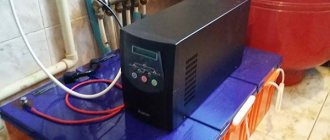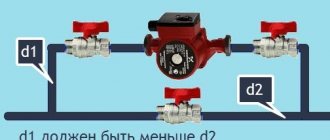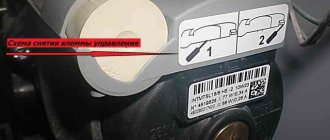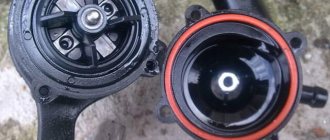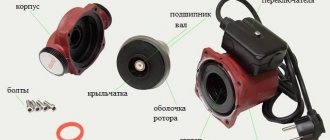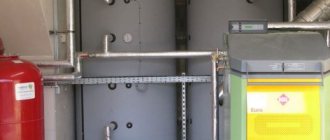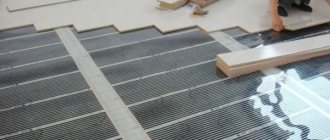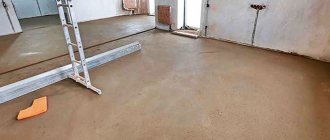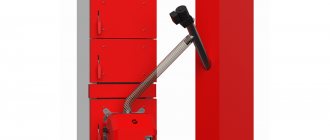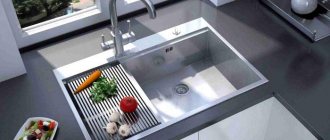Despite the widespread use of heating systems with natural coolant circulation, they have a number of serious disadvantages. These include the low speed of fluid movement, which negatively affects the final temperature in the return circuit. It should also be mentioned that not all radiators receive the same amount of hot water. Such shortcomings do not allow the house to be provided with sufficient heat.
However, today this problem can be solved if the heating system operates in combination with a circulation pump . Here the problem arises: which one to choose? If you turn to specialists, then, in their opinion, the best option among all the options offered is the Grundfos UPS pump.
history of the company
The starting point for Grundfos should be considered 1945.
It was then that, on the initiative of the Danish engineer Paul Du Jensen, a small production was founded, which was called “Bjerringbro Pressestoberi og Maskinfabrik”. If you try to translate it, in Russian it will sound like the Bjerringbro injection molding and machining factory. During the first years of the company’s operation, the engineer devoted all his efforts to the creation and production of only one product - pumping equipment. Thanks to the high quality of the products, as well as a non-standard approach to solving most problems regarding design features and dimensions, it did not take the company very long for the manufactured units to become highly popular. As production capacity increased, more and more consumers chose products under this brand.
Until 1967, the company changed its name several times. And only this year the name Grundfos was assigned to it, by which today the manufacturer of high-quality pumps is recognized.
If we look at world statistics, then the share of pumping equipment manufactured under the Grundfos brand accounts for about 50% of global consumption. The reasons for this situation are not only related to high quality. This was also facilitated by the fact that the company today represents an international concern. In many countries there are plants, factories and small assembly shops created on the initiative of Grundfos management. They are also available in our country. Thus, in the Russian capital in 1992, a representative office of the company appeared , which later received the status of a subsidiary, the first decision of which was to launch a plant near the city of Istra.
Types of devices
If we consider the company’s assortment, we can distinguish the following types of grundfos pumps:
- With dry rotor.
- With wet rotor.
With dry rotor
One of the features of this type of pumping equipment is its high efficiency. In addition to this, it has great power. Similar models of Grundfos pumps are designed to work with large volumes of liquid .
For this reason, they are common in manufacturing plants or used in heating systems of large buildings. But for private residential properties they are used extremely rarely. If we consider the design of this device, then it eliminates contact of the rotor with the liquid, which determines the name of these pumps. The separator between this part and the chamber in which the liquid circulates is a cuff.
When operating Grundfos dry-type circulation pumps, it should be taken into account that they create a lot of noise. This is due to the presence in their design of a special fan, which during rotation ensures cooling of the device body .
With wet rotor
If we consider heating systems for private residential properties, then the best choice for them would be the Grundfos UPS pump. Let's try to decipher the abbreviation of this device: UP indicates that this model represents a class of circulation pumps, S gives a hint that the device uses a three-speed switching system. In other words, during operation of the grundfos circulation pump, the owner can choose any of three speeds, which can be switched mechanically or automatically.
Compared to devices of the previous type, installations equipped with a wet rotor are distinguished by high efficiency , the value of which reaches 50%. Its advantages include the absence of noise during operation. True, for effective use, the system must supply high-quality coolant. If this requirement is met, you can expect that the grundfos pump will be able to effectively cope with its task for at least 10 years.
According to experts, the best choice for the heating system of a private home is a Grundfos pump with automation. This will allow the owner to choose the desired operating mode for several days. In addition, when using such a pump, energy consumption will be low. An important point is that there is no need to carry out maintenance activities for such equipment. You just need to set the necessary settings for the device, after which you will not need to change anything in the equipment.
Connection methods
Electrical connection using a plug and socket. This method involves installing an electrical outlet in close proximity to the place where the circulation pump is mounted. Sometimes they can be supplied with a connected cable and plug included, as in the photo:
In this case, you can simply plug the device into the mains using an outlet located within reach of the cable. You just need to make sure there is a third, grounding contact in the outlet.
If there is no cord with a plug, they need to be purchased or removed from an unused electrical appliance.
You should pay attention to the cross-section of the cord conductors. It should be between 1.5 mm2 and 2.5 mm2
The wires must be stranded copper, ensuring resistance to repeated bending. The cord with a plug for connecting electrical appliances to the network is shown in the photo below:
Before connecting the circulation pump, you need to find out which of the three wires of the cord is connected to the ground pin of the plug. This can be done using an ohmmeter, while at the same time checking the integrity of the remaining wires.
Open the terminal box cover. Inside the box there are three terminals designed to connect the device to the network, marked as in the picture:
We unscrew the clamp of the cable coupling (in the first photo it is a plastic nut into which the cable is inserted), put it on our cord, and insert the cord into the coupling. If there is a cable tie inside the box, thread the cord through it. We connect the ends of the cord wires, previously stripped of insulation, to the terminals.
The wires connected to the plugs of the plug should be connected to the L and N terminals (don’t be afraid to mix them up, this is not critical), the wire of the grounding contact of the plug should be connected to the PE terminal (but you can’t make a mistake here). The instructions supplied with the product prohibit its operation without protective grounding. Next, tighten the clamp (if any), tighten the cable sleeve clamp tightly, and close the terminal box cover. The pump is ready to be plugged into the mains.
Fixed connection. The connection diagram for the circulation pump to the electrical network with grounding is provided below:
The requirements for the wire cross-section here are the same as in the previous version. The cable for this installation can be used either flexible or inflexible, copper, VVG brand, or aluminum, AVVG. If the cable is inflexible, the installation should ensure that it does not move. To do this, the cable along the entire route is secured with clamps.
In this option, a residual current device (differential circuit breaker) is used. Instead, you can use a regular single-pole circuit breaker, passing only the phase wire through it. If the machine is installed in a panel where there is a PE bus, then the cable from the pump to the machine must be three-core. If there is no such bus, the PE terminal should be connected to a grounding device. This connection can be made with a separate wire.
Separately, I would like to consider such an installation option as connecting the pump to the UPS. It is the most preferable and ensures the independence of the heating system from power outages. The connection diagram of the circulation pump to the uninterruptible power supply is provided below:
The power of the UPS should be selected based on the power of the pump motor. The capacity of the battery is determined by the estimated time of autonomous power supply of the circulation pump, that is, the time when the power supply is turned off. We talked about how to choose a UPS for a boiler in a separate article. Requirements for cable cross-section, as well as the presence of protective grounding, apply to all connection options.
Finally, we recommend watching video instructions for connecting various pump models to the electrical network:
Grundfos
Wilo Stratos-PICO
Connection diagram of the circulation pump to the thermostat
So we looked at how to properly connect the circulation pump to the electrical network. The diagram and video examples helped to consolidate the material and clearly see the nuances of installation!
Technical characteristics overview
You can get an idea of the technical characteristics of the device using the example of one of the manufacturer’s models, which can be the Grundfos UPS 25-40ST pump . This device is in fairly high demand among owners of country houses.
If you analyze the numbers present in the marking, you can understand that the model is equipped with pipes with a diameter of 25 mm, having a pressure of 4 m. This product is capable of ensuring the efficient operation of the heating systems of a one-story house.
If the heating is presented in the form of a single-pipe system, then such a Grundfos circulation pump can successfully perform its functions in a two-story house.
Where to put
It is recommended to install a circulation pump after the boiler, before the first branch, but on the supply or return pipeline it doesn’t matter. Modern units are made from materials that can withstand temperatures up to 100-115°C. There are few heating systems that work with a hotter coolant, so considerations of a more “comfortable” temperature are untenable, but if you feel safer, put it in the return line.
Can be installed in the return or direct pipeline after/before the boiler up to the first branch
There is no difference in hydraulics - the boiler, and the rest of the system; it makes absolutely no difference whether there is a pump in the supply or return branch. What matters is the correct installation, in terms of strapping, and the correct orientation of the rotor in space
Nothing else matters
There is one important point regarding the installation location. If the heating system has two separate branches - on the right and left wings of the house or on the first and second floor - it makes sense to install a separate unit on each, and not one common one - directly after the boiler. Moreover, the same rule remains on these branches: immediately after the boiler, before the first branch in this heating circuit. This will make it possible to set the required thermal conditions in each part of the house independently of the other, and also in two-story houses to save on heating. How? Due to the fact that the second floor is usually much warmer than the first floor and much less heat is required there. If there are two pumps in the branch that goes up, the speed of movement of the coolant is set much lower, and this allows you to burn less fuel, without compromising the comfort of living.
There are two types of heating systems - forced and natural circulation. Systems with forced circulation cannot work without a pump; systems with natural circulation work, but in this mode they have lower heat transfer. However, less heat is still much better than no heat at all, so in areas where electricity is often cut off, the system is designed as hydraulic (with natural circulation), and then a pump is installed into it. This gives high heating efficiency and reliability. It is clear that the installation of a circulation pump in these systems is different.
All heating systems with heated floors are forced - without a pump, the coolant will not pass through such large circuits
Forced circulation
Since a forced circulation heating system without a pump is inoperative, it is installed directly into the gap in the supply or return pipe (of your choice).
Most problems with the circulation pump arise due to the presence of mechanical impurities (sand, other abrasive particles) in the coolant. They can jam the impeller and stop the motor. Therefore, a mesh dirt filter must be placed in front of the unit.
Installing a circulation pump in a forced circulation system
It is also advisable to install ball valves on both sides. They will make it possible to replace or repair the device without draining the coolant from the system. Turn off the taps and remove the unit. Only that part of the water that was directly in this piece of the system is drained.
Natural circulation
The piping of the circulation pump in gravity systems has one significant difference - a bypass is required. This is a jumper that makes the system operational when the pump is not working. One ball shut-off valve is installed on the bypass, which is closed the entire time the pumping is running. In this mode, the system operates as forced.
Installation diagram of a circulation pump in a system with natural circulation
When the electricity goes out or the unit fails, the valve on the jumper is opened, the valve leading to the pump is closed, and the system operates as a gravity system.
Installation features
There is one important point, without which the installation of the circulation pump will require rework: it is necessary to rotate the rotor so that it is directed horizontally. The second point is the direction of flow. There is an arrow on the body indicating which direction the coolant should flow. This is how you turn the unit so that the direction of movement of the coolant is “in the direction of the arrow”.
The pump itself can be installed both horizontally and vertically, just when selecting a model, make sure that it can work in both positions. And one more thing: with a vertical arrangement, the power (pressure created) drops by about 30%. This must be taken into account when choosing a model.
Design features
For the manufacture of certain parts of the grundfos pump, different materials can be used: cast iron is used for the pump body, aluminum is used for the motor.
The material used for the impeller and bearings is ceramics, and for the rotor of a solid design – steel. When choosing each of these materials, their characteristics were taken into account. Thanks to them, these elements demonstrate high strength and cope well with coolant heated to high temperatures. First of all, you should highlight the bearings. Even if the pump is used in particularly harsh conditions, ceramic bearings can operate without a single repair for up to 10 years. In addition, the use of ceramics provides the advantage of reducing noise during rotor rotation.
If we evaluate the manufacturer’s assortment, it includes models of grundfos circulation pumps equipped with a technopolymer impeller and a ceramic rotor. Through the use of such innovations, it is possible to significantly increase the efficiency of the installation and extend its operational life. These features should be remembered by those for whom it is important to install a high-quality device into the heating system.
Requirements for installation of a circulation pump
There are a number of standards that regulate at the legislative level the installation of a circulation pump in a heating system. Some of the rules are set out in SNiP 2.04.05 “Heating...”. For example, it talks about the priority of schemes with forced circulation in heating networks.
Almost all requirements are justified by the operating efficiency of the system as a whole and the circulation device in particular. For example, the shaft of a device with a wet rotor must be installed on the pipe strictly horizontally in level so that there are no air pockets inside and the pump parts do not wear out prematurely.
A filter for dirt and abrasive particles is needed in any case, even when installing monolithic models. Filtered coolant will cause much less damage to pump parts than liquid with sand and suspended matter.
The mudguard is installed with the plug down in the direction of water movement to reduce resistance and facilitate system maintenance.
Some rules are dictated by manufacturers. For example, it was customary to install old models of certain brands exclusively on the return line, since they could not withstand high temperatures.
What to pay attention to during installation?
A difficult point at the installation stage is the correct choice of the direction of the pipes.
However, there will be no problems with this due to the fact that the manufacturer has taken the necessary measures that will simplify the solution of this problem. If you look at the pump body, you can see an arrow corresponding to the rotation of the rotor. From it you can understand in which direction the coolant is moving. Please note that the circulation pump is sold without mounting hardware . Therefore, you will have to buy them separately. Having completed the installation of the circulation device, you should pause for a day, and then you can start the pump. This must be done for the reason that the operation of circulation pumping equipment must take place exclusively at positive indoor temperatures. If before purchasing the pump it was located or transported in the cold, then without natural heating of its component elements during startup there is a risk of its breakdown.
To connect the device to the AC network, it is advisable to use a separate cable separated from the distribution panel. If you use the Grundfos UPS 25-40 model, you can choose a three-core copper cable with a cross-section of one core of 0.75 mm2.
Recommendations for pump installation procedure
This work should be done in the so-called “off-season”. But if there is a need to carry out the installation during the heating season, the boiler needs to be “turned off” and wait until the temperature of the coolant drops - these are basic things that do not need additional comments.
- If it is necessary to install a bypass, it is better to assemble it separately, installing all the fittings and the circulation pump. All that remains is to make an insert into the pipe.
- The next stage is bleeding the air while simultaneously monitoring the system to detect leaks.
After this, you can safely switch the circuit to work with a pump.
Review of other models
There are also other models on the market under the Grundfos brand:
- Magna.
- Alpha.
Magna
The model of this pumping equipment is presented in three classes: large, medium and small pumps. If we are talking about the heating system of a private house, then you should choose a device that represents the last two groups.
The model is distinguished by the fact that it is capable of equally effectively supporting the operation of the heating system, hot water supply, and air conditioning. The design includes a control unit, the function of which is to control the temperature and pressure created in the heating system. The main purpose of low-power pumps is to use them to ensure the efficient operation of heated floors.
Alpha
When developing this model, the latest achievements of the company were used, thanks to which the need to use manual and automatic adjustment methods disappeared. In other words, the company managed to create a “smart pump”. After installation, this equipment independently determines the preferred operating mode. The owner can rest assured that the device will choose the most suitable option. When using such a unit, it is possible to ensure not only efficient distribution of heat throughout the premises, but also reduce fuel and electricity costs.
During operation, the device monitors heating changes, adapting its operating mode to them. The owner has the opportunity to independently select values for certain mode parameters. For example, it is possible to provide that the pump reduces fuel consumption at night, as well as during those hours when there are no people in the house. In addition to this, the electricity supply system is equipped with a special unit, the function of which is to convert the frequency of the current.
